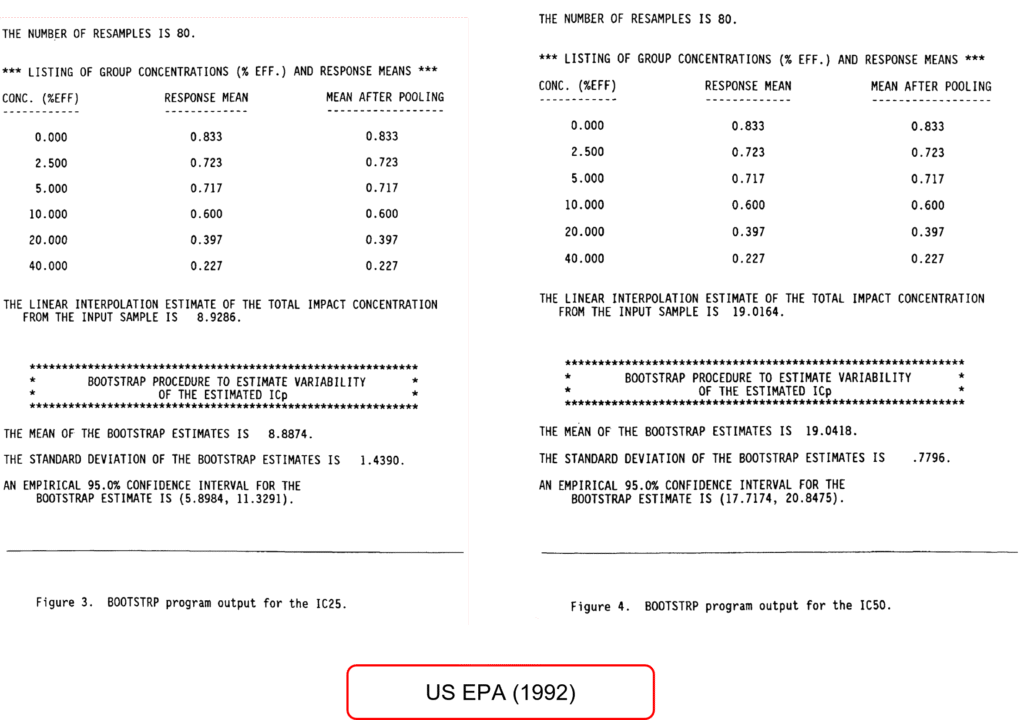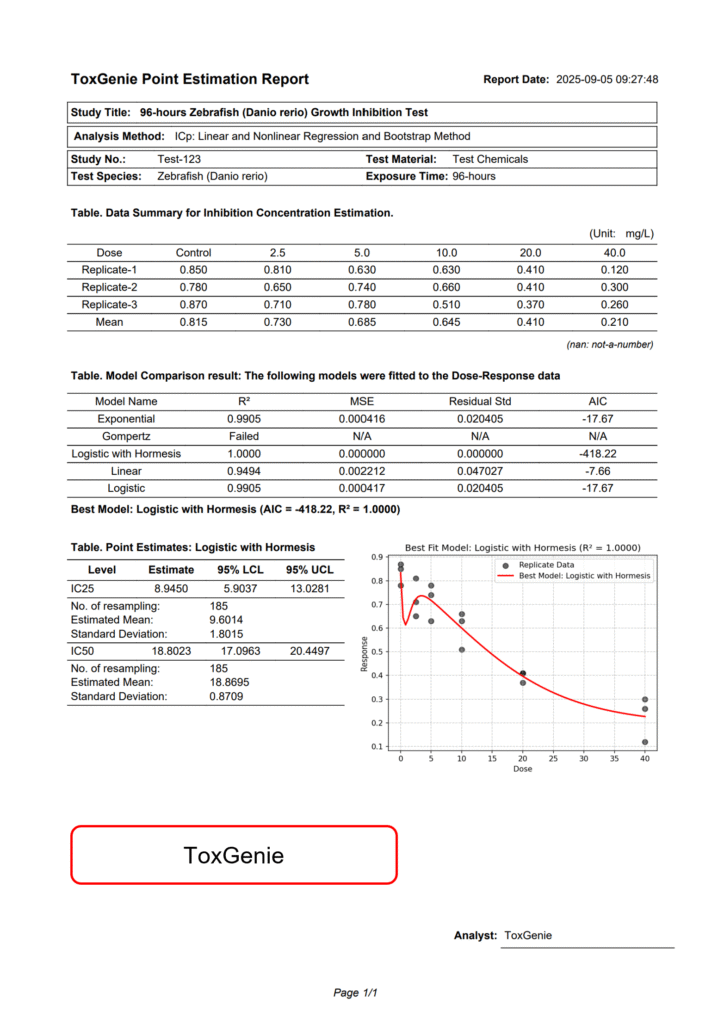Preparation for IC25 and IC50 Estimation
As with all statistical analysis of toxicity data, it is critical to visualize the experimental data distribution through graphing.
A minimum of three replicates is necessary in a toxicity test to enable the calculation of IC25 and IC50.
ToxGenie automatically identifies user-input data and selects the optimal model from among exponential, Gompertz, hormesis, linear, and logistic models for analysis. Therefore, you only need to input your experimental data.
What is the Linear Model?
The Linear model is a mathematical model used in toxicology, biology, and statistics to describe the relationship between the concentration (dose) of a substance and the biological response (e.g., inhibition rate, growth rate) in the form of a straight line. In simple terms, it assumes that the biological response increases or decreases proportionally as the concentration increases.
Characteristics of the Linear Model
Linear Relationship
The Linear model represents the relationship between concentration and response as a straight line. This means that for every incremental increase in concentration, the response changes at a constant rate. For example, if the concentration of a toxic substance doubles, the model assumes the toxic effect also doubles proportionally.
Simplicity and Intuitiveness
The model is mathematically straightforward and easy to understand, allowing for rapid data analysis without complex computations. It is particularly suitable when the data exhibit a linear pattern.
Mathematical Representation
The Linear model is typically expressed as (Environment Canada, 2005):

Comparison with Other Models
- The Gompertz model and Logistic model produce S-shaped curves, capturing nonlinear responses where the effect increases rapidly and then plateaus.
- The Hormesis model describes a U-shaped or J-shaped pattern, with stimulation at low concentrations and inhibition at high concentrations.
- The Linear model, in contrast, is limited to simple linear relationships and cannot account for nonlinear patterns.
Advantages of the Linear Model
- Simplicity: The model is mathematically simple, computationally efficient, and accessible to beginners.
- Intuitive Interpretation: The straight-line relationship allows for easy visualization and understanding of the connection between concentration and response.
- Ease of Application: It provides accurate and rapid analysis when the data follow a linear pattern.
Limitations of the Linear Model
- Inability to Capture Nonlinear Responses: Many biological systems exhibit S-shaped, U-shaped, or other complex patterns that the Linear model cannot accurately describe.
- Data Constraints: The model’s predictive power diminishes if the data do not follow a linear pattern.
- Oversimplification: The model may oversimplify complex biological responses. For instance, it cannot account for cases where a toxic substance has little effect at low concentrations but becomes highly toxic beyond a certain threshold.
Analysis Results of ToxGenie’s IC25 and IC50 Estimation
To compare ToxGenie’s analysis results, IC25 and IC50 estimation methods were applied using the same data as in the US EPA Report (EPA/600/4-91/021, February 1992). The results are shown above. However, due to difficulties in obtaining data optimized for each model, representative analysis results are provided, and users are encouraged to analyze various datasets.
The US EPA used the Linear Interpolation method to calculate IC25 and IC50, with 80 resamples. However, Environment Canada (2005) recommends a minimum of 240 resamples. ToxGenie employs 240 resamples, excluding outlier data, to calculate 95% confidence limits. Consequently, there are slight differences from the US EPA results, but all fall within the 95% confidence interval. The reasons for these differences are explained below.


The US EPA’s Linear Interpolation method estimates IC25 and IC50 values through simple linear interpolation, relying on linear connections between data points. This approach is fast and intuitive but may fail to capture nonlinear biological responses (e.g., sigmoidal curves). In contrast, exponential, Gompertz, hormesis, linear, and logistic models use nonlinear regression analysis to model more complex dose-response relationships.
Resampling 80 times estimates 95% confidence limits through bootstrapping but may not fully capture the variability of the distribution due to the small sample size, potentially resulting in less stable confidence limits. Resampling 200 or more times reflects the distribution’s characteristics more accurately, narrowing the confidence interval and increasing stability.
Start Your Toxicity Data Statistical Analysis with ToxGenie
Understanding quantal and quantitative data is the first step toward robust toxicology research. ToxGenie offers an intuitive platform for both data types, suitable for beginners and experts alike. Curious? Start with a 30-day free trial and revolutionize your toxicity data statistical analysis today!
